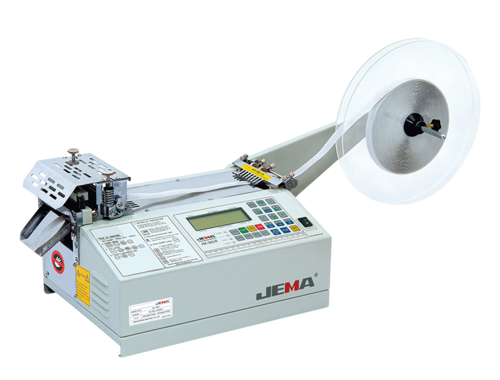Elastic Cutting Machines are widely used to cut soft and flexible materials such as foam, rubber, sponges, and other high-elasticity substrates.
One key factor affecting cutting performance is the relationship between machine speed, material thickness, and material hardness.
Understanding this relationship ensures precise cuts, reduces material waste, and extends machine lifespan.
Operators and manufacturers must consider both material characteristics and machine capabilities to optimize cutting operations.

Impact of Material Thickness on Cutting Speed
Thicker materials require adjustments to cutting speed to maintain accuracy:
- High-speed cuts on thick materials can cause tearing, deformation, or uneven edges.
- Slower speeds allow the blade to penetrate fully, ensuring a clean and precise cut.
- Layered materials may need multiple passes at reduced speed to avoid compressing or stretching the material.
- Machine settings often include variable speed control to accommodate different thickness ranges, ensuring consistent quality.
Effect of Material Hardness
Material hardness also influences the suitable cutting speed:
- Soft, spongy materials require careful handling to prevent excessive deformation.
- Medium-hard materials, such as rubber sheets, need slightly higher cutting pressure and moderate speed to maintain edge quality.
- Extremely hard elastic materials may require a slower speed combined with sharp, high-quality blades to prevent blade wear and overheating.
- Matching blade type and speed with material hardness ensures efficient cutting without damaging the machine or material.
Blade Selection and Its Influence on Speed
Blade characteristics directly affect the relationship between speed, thickness, and hardness:
- Thin, sharp blades cut quickly through soft materials without causing compression or deformation.
- Heavy-duty blades with reinforced edges are better suited for thick or hard materials but require slower cutting speeds to prevent wear.
- Oscillating or vibration-assisted blades can enhance performance on tough elastic materials by reducing resistance and improving edge finish.
- Blade maintenance, including sharpening and alignment, is essential to maintain suitable speed and cutting efficiency.
Machine Speed Adjustment Strategies
Operators must adjust speed based on material characteristics:
- Soft, thin materials can be processed at higher speeds, increasing production efficiency.
- Thick or dense materials require slower speeds to avoid overheating the blade or causing jagged cuts.
- For variable-thickness materials, speed adjustments may need to be dynamic during cutting to maintain precision.
- Many modern Elastic Cutting Machines provide programmable speed settings or automatic feedback systems to optimize cutting performance.
Heat and Friction Considerations
Cutting speed affects heat generation, which impacts both the machine and the material:
- Excessive speed on hard or thick materials can cause friction, generating heat that may deform elastic substrates.
- Heat can also accelerate blade wear or damage machine components if not managed properly.
- Using appropriate lubrication, cooling, or intermittent cutting cycles helps maintain a suitable temperature and speed balance.
Applications and Practical Guidelines
Understanding the speed-thickness-hardness relationship enhances industrial applications:
- In the automotive industry, cutting rubber gaskets or insulation requires balancing speed with material properties for accuracy.
- In packaging, foam inserts must be cut without compression marks, often using slower speeds for thicker sections.
- Footwear and cushioning production benefit from adjustable machine speed to handle variable-density sponge or foam materials.
- Manufacturers often provide recommended speed charts for different materials to guide operators in production environments.
- The relationship between the Elastic Cutting Machine speed, material thickness, and hardness is critical for achieving high-quality cuts.
- Thicker or harder materials require slower cutting speeds, while thinner, softer materials allow faster cutting speeds without compromising accuracy.
- Blade selection, machine settings, and thermal management play significant roles in optimizing performance.
- Proper understanding and adjustment of cutting parameters improve efficiency, extend machine life, and ensure good results in diverse applications.
- By carefully considering these factors, operators can improve both productivity and material quality across a wide range of elastic substrates.


.png?imageView2/2/w/500/h/500/format/jp2/q/100)

